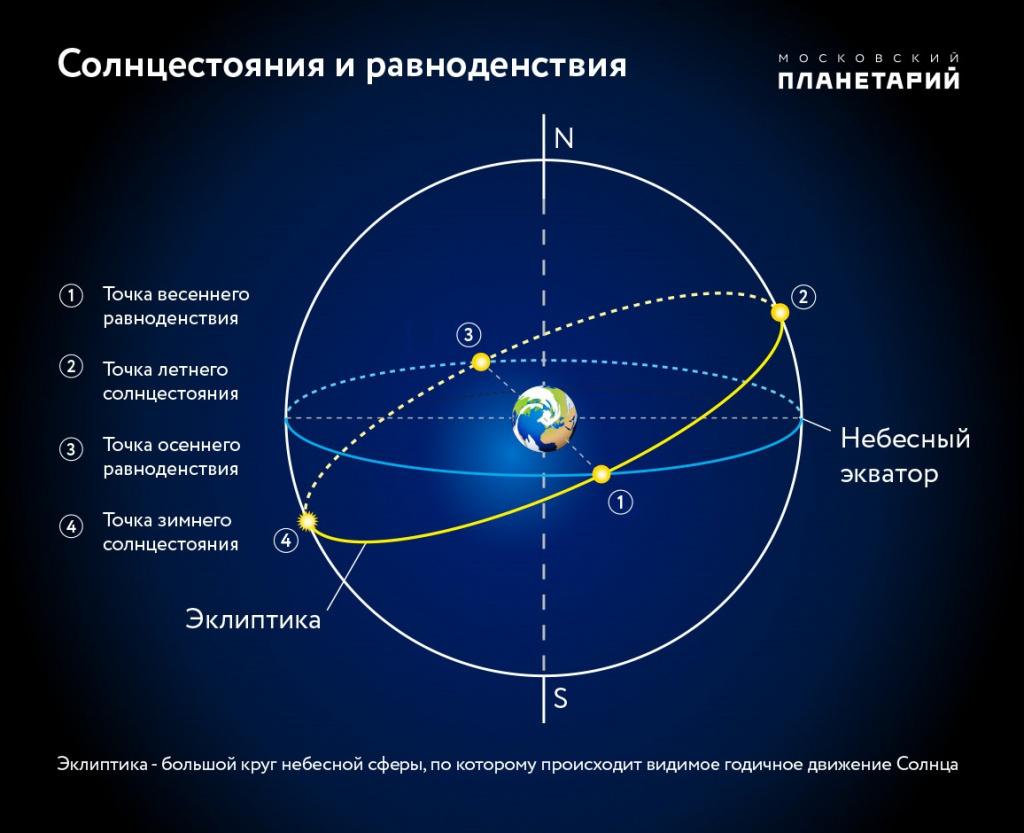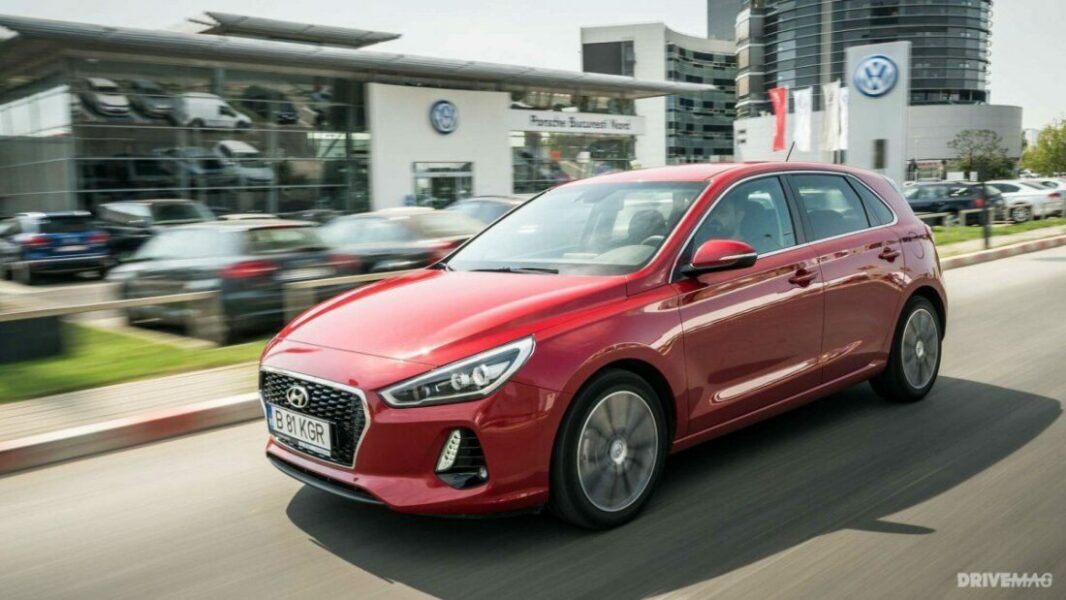
Test: Hyundai i30 1.4 T-GDi Impression
Content
If until recently it seemed that Hyundai would play the role of a minor player in the European market, now is the time to say that it is ripe for the first lineup. We don't need dusty archives, Wikipedia, and old wise men to remember the role that Koreans played in our country. The Pony, Accent and Elanter were not bought by anyone with cutting edge technology, safety and comfort in mind. Now history is changing. The new Hyundai i30 is a car that it's safe to say that customers come to the showroom because they want to.

The new i30 is designed, developed and tested in Europe and meets the expectations of European customers. All of these are guidelines set out recently in Seoul, and now we are seeing the result. The predecessor still had a lot of Oriental flaws, but now Hyundai has been able to listen to customers and take into account their comments. Perhaps they had the fewest comments on the form, which, one might say, remains rather restrained. With all the LED signatures and chrome plating, it lets you know it's the current model, but it still doesn't stand out in terms of design and can be visually teamed up with the Golf, Astro and Focus and disappear with the Megane and Tristoosmica.
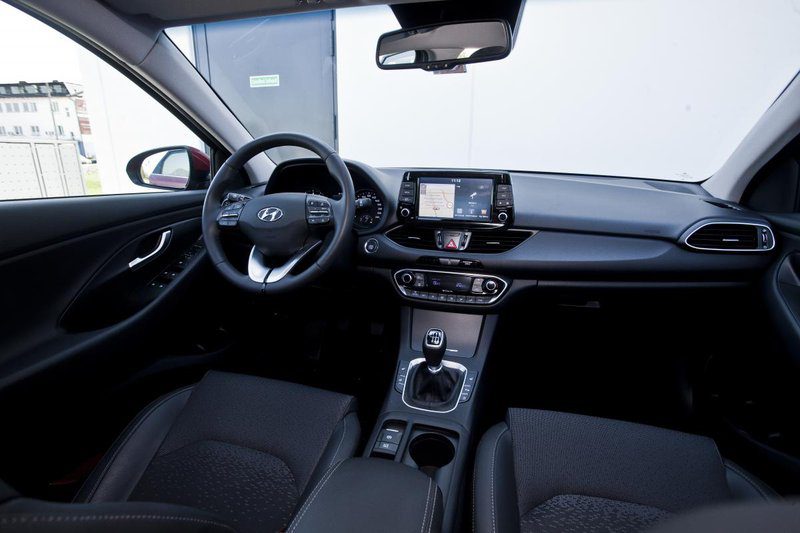
Inside, a pretty calm story continues in terms of design, but that doesn't mean the i30 is disappointing. Ergonomics is highlighted, which is at a high level for a beginner. There is a perception at Hyundai that over-digitalization is not to their liking for their customers, so the driving environment is still simply projected. Although the central element is an eight-inch touchscreen, they did not dare to place all the buttons from the central part of the armature into it. The i30's infotainment system is one of the best in its segment as, in addition to supporting Apple CarPlay and Android Auto, it also offers one of the more transparent and user-friendly interfaces.
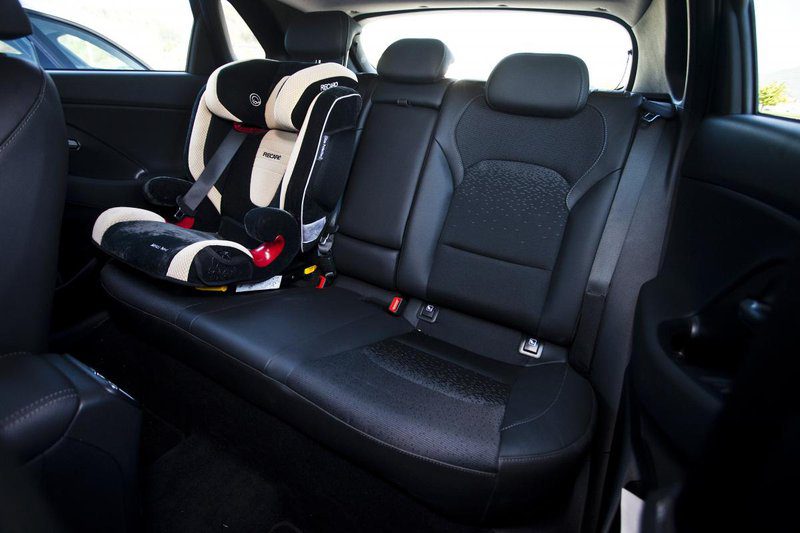
With good ergonomics, seating, transparency and plenty of storage space, the new i30's comfort is at a very high level. And while good materials are used throughout, it is unwise to place a single piece of hard, unattractive plastic right in front of the driver. Every time you start the engine with a switch or touch the gearbox, you can feel the hard plastic rubbing under your fingernails. We would never have mentioned this if Hyundai hadn't flirted with the best in its class and even looked towards the premium segment. At least that is how it can be judged by the configuration of the i30. If we only mention a suite of safety aids: there is a collision warning system that brakes at lower speeds, there is also a lane departure warning, a driver fatigue detection system, and a reversing warning system. Needless to say, a rear view camera and parking assistant.
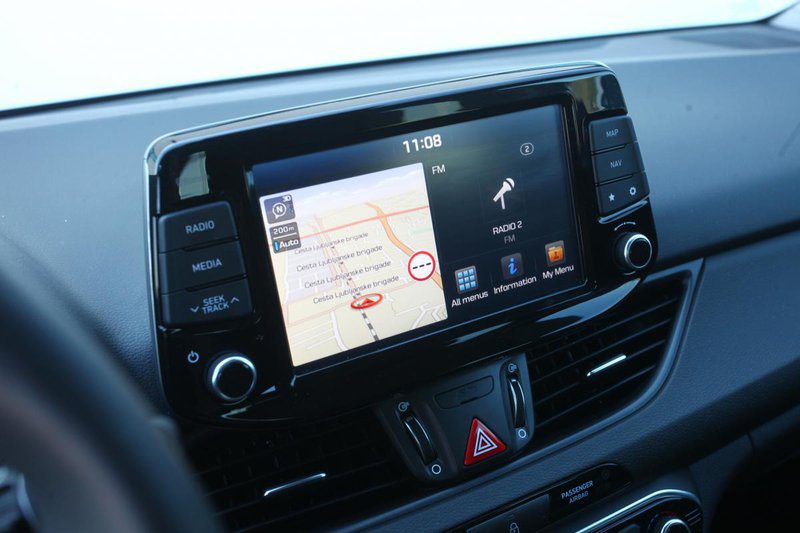
Even behind the driver's back, the story of comfort and practicality doesn't end there. There is ample room for passengers in the rear seat, and convenient Isofix mounts are available for installing a child seat. To carry luggage, 395 liters of luggage should be enough, and when the rear seat is folded down, just in case, there will be a luxurious 1.300 liters of space. There is also an open area for ski transport for ski lovers.
With the new i30, Hyundai promises us a dynamic and stable ride with a high level of comfort. All of this is confirmed by the fact that 100 operating kilometers have been laid on the Nurburgring. In truth, driving a beginner is pretty easy. Surely the fast miles in Green Hell helped keep the car well balanced and easy to drive, not set records on the racetrack. The steering mechanism is precise, but not sharp enough to provide complete confidence in dynamic driving. The chassis is also more suited to motorway stretches and swallowing sewers in cities, so those who value comfort come to mind. The cockpit is well sealed, the wind noise and the noise from under the tires inside are small, nothing that could not be overcome by an audio system with digital radio reception.

Buyers of the new i30 have three engines at their disposal, namely two petrol engines in addition to the diesel one. For the test, we were provided with a 1,4 "horsepower" 140-liter turbocharged four-cylinder petrol engine. It is an engine that replaces the 1,6-liter engine of its predecessor, offering the newcomer much more dynamism and agility. The work is calm and quiet, which, of course, is typical for gas stations. Even at high engine speeds, interior noise remains at a lower level. In fact, you'll rarely drive at high revs as the i30 is equipped with a six-speed manual transmission that also has slightly longer gear ratios. Maybe that's why the "turbo hole" is more noticeable at low revs, because you need to wait a bit until the engine wakes up. If we are satisfied with almost all segments of the engine operation, then it is difficult to say in terms of the flow rate achieved during the tests. On a standard lap, which fairly accurately reflects day-to-day use of the car, the i30 consumes 6,2 liters per 100 kilometers. During the entire test, which also includes our measurements, the flow rate jumped to 7,6 liters. Not much, but a bit too much for such a machine.
It can be said that the pro-European orientation of Hyundai models has already reached a satisfactory level. The Hyundai i30 is a simple car that is easy to live with. However, it remains a car that is hard to fall in love with, and the mind makes the choice easier.
text: Sasha Kapetanovich · photo: Sasha Kapetanovich
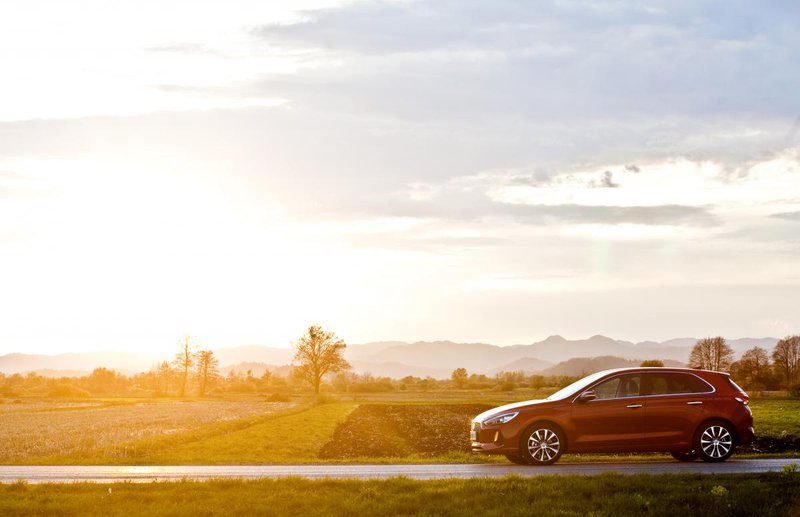
я 3 0 1. 4 T – GD i I mpression (2017)
Basic data
| Base model price: | 20.890 € |
|---|---|
| Test model cost: | 24.730 € |
| Power: | 103kW (140 KM) |
| Acceleration (0-100 km / h): | 9,7 with |
| Maximum speed: | 210 km / h |
| Mixed flow ECE: | 6,2l / 100km |
| Guarantee: | 5 years unlimited, total km warranty, 5 years for mobile device no guarantee, varnish guarantee 5 years, 12 year guarantee for prerjavenje. |
| Systematic review | 30.000 km or two years. km |
Cost (up to 100.000 km or five years)
| Regular services, works, materials: | 687 € |
|---|---|
| Fuel: | 7.967 € |
| Tires (1) | 853 € |
| Loss of value (within 5 years): | 7.048 € |
| Compulsory insurance: | 3.480 € |
| CASCO INSURANCE (+ B, K), AO, AO + | 4.765 ( |
| Calculate the cost of auto insurance | |
| Buy up | € 24.800 0,25 (km cost: XNUMX €) |
Technical information
| engine: | 4-cylinder - 4-stroke - in-line - turbo-petrol - front transverse mounted - bore and stroke 71,6 × 84,0 mm - displacement 1.353 cm3 - compression 10:1 - maximum power 103 kW (140 hp) at 6.000 / min - average piston speed at maximum power 14,3 m / s - specific power 76,1 kW / l (103,5 hp / l) - maximum torque 242 Nm at 1.500 rpm – 2 overhead camshafts (timing belt) – 4 valves per cylinder – common rail fuel injection – exhaust turbocharger – aftercooler. |
|---|---|
| Energy transfer: | the engine drives the front wheels - 6-speed manual transmission - gear ratio I. 3,615 hours; II. 1,962; III. 1,275 hours; IV. 0,951; V. 0,778; VI. 0,633 - differential 3,583 - rims 6,5 J × 17 - tires 225/45 R 17, rolling range 1,91 m. |
| Capacity: | Performance: top speed 210 km/h - 0-100 km/h acceleration in 8,9 s - average fuel consumption (ECE) 5,4 l/100 km, CO2 emissions 124 g/km. |
| Transportation and suspension: | limousine - 5 doors, 5 seats - self-supporting body - individual front suspension, suspension struts, three-spoke wishbones, stabilizer - rear axle shaft, coil springs, telescopic shock absorbers, stabilizer bar - front disc brakes (with forced cooling), rear disc brakes, ABS, electric parking brake on the rear wheels (switching between seats) - steering wheel with rack and pinion, electric power steering, 2,6 turns between extreme points. |
| Mass: | empty vehicle 1.427 kg - permissible total weight 1.820 kg - permissible trailer weight with brakes: 1.400 kg, without brake: 600 kg - Permissible roof load: eg kg. |
| External dimensions: | External dimensions: length 4.340 mm - width 1.795 mm, with mirrors 2.050 mm - height 1.450 mm - wheelbase. distance 2.650 mm - track front 1.604 mm - rear 1.615 mm - driving radius 10,6 m. |
| Inner dimensions: | Internal dimensions: longitudinal front 900-1.130 580 mm, rear 810-1.460 mm – width front XNUMX mm, rear 1.460 mm – headroom front 920–1.020 950 mm, rear 500 mm – front seat length 480 mm, rear seat 395 mm – boot 1.301–365 50 l – handlebar diameter XNUMX mm – fuel tank l. |
Our measurements
| T = 18 ° C / p = 1.023 mbar / rel. vl. = 55% / Tires: Michelin Primacy 3/225 Condition R 17 V / odometer: 2.043 km xxxx | |
| Acceleration 0-100km: | 9,1s |
|---|---|
| 402m from the city: | 16,6 years ( 138 km / h) |
| Flexibility 50-90km / h: | 8,3 / 10,2s (IV/V) |
| Flexibility 80-120km / h: | 9,8 / 11,6 s (Sun./Fri.) |
| test consumption: | 7,6 l / 100km |
| Fuel consumption according to the standard scheme: | 6,2 l / 100km |
| Braking distance at 130 km / h: | 58,2m |
| Braking distance at 100 km / h: | 35,5m |
| AM table: | 40m |
| Noise at 90 km / h in 6rd gear | 59dB |
| Noise at 130 km / h in 6rd gear | 62dB |
Overall rating (342/420)
It may not be the car that drives the neighbors to despair out of envy, but it will still be you.
felt good in it. If Koreans still have mixed stripes of Japanese brands on
European land, the natives are now in danger.Exterior (11/15)
1-300 It doesn't get much attention, but it's still a feature that Hyundai customers demand.
Interior (102/140)
The interior deserves praise for good ergonomics and interior dimensions. Slightly less
due to the materials used.Engine, transmission (55
/ 40)The engine is great, but not sharp enough due to the higher gear ratio.
Driving performance (62
/ 95)It has a quiet ride, but it is not afraid of dynamic flashes.
Performance (24/35)
The turbocharged petrol engine wakes up late but is still a good choice for this car.
Security (37/45)
It's already well equipped with safety features as standard, we don't have an NCAP rating yet, but we do.
five stars is nowhere to go.Economy (51/50)
The price is attractive, the guarantee is higher than the norm, only fuel consumption spoils the rating.
We praise and reproach
comfort
feeling inside
ergonomics
utility
price
infotainment system
Equipment
fuel consumption
cheapness of some pieces of plastic in the interior
